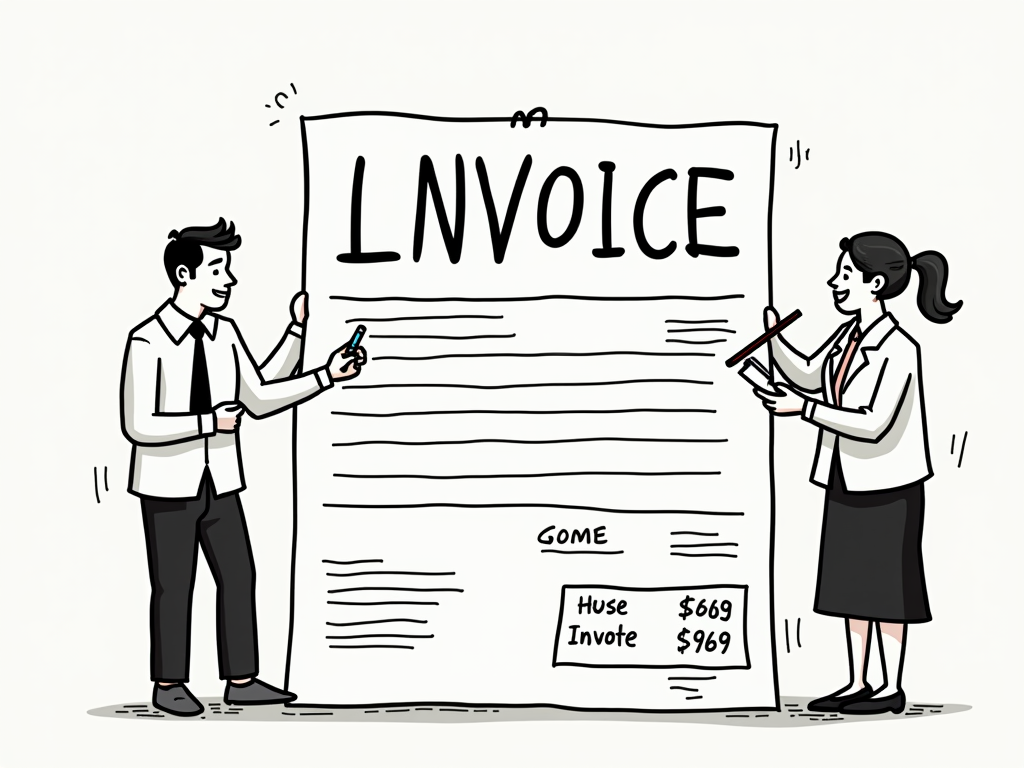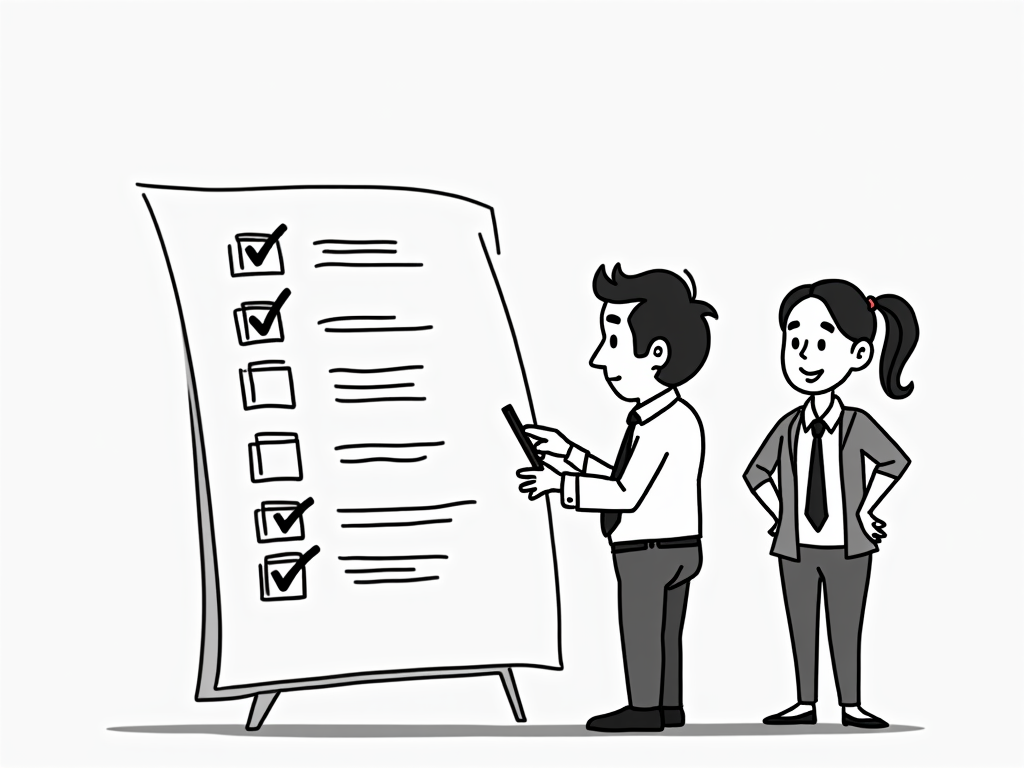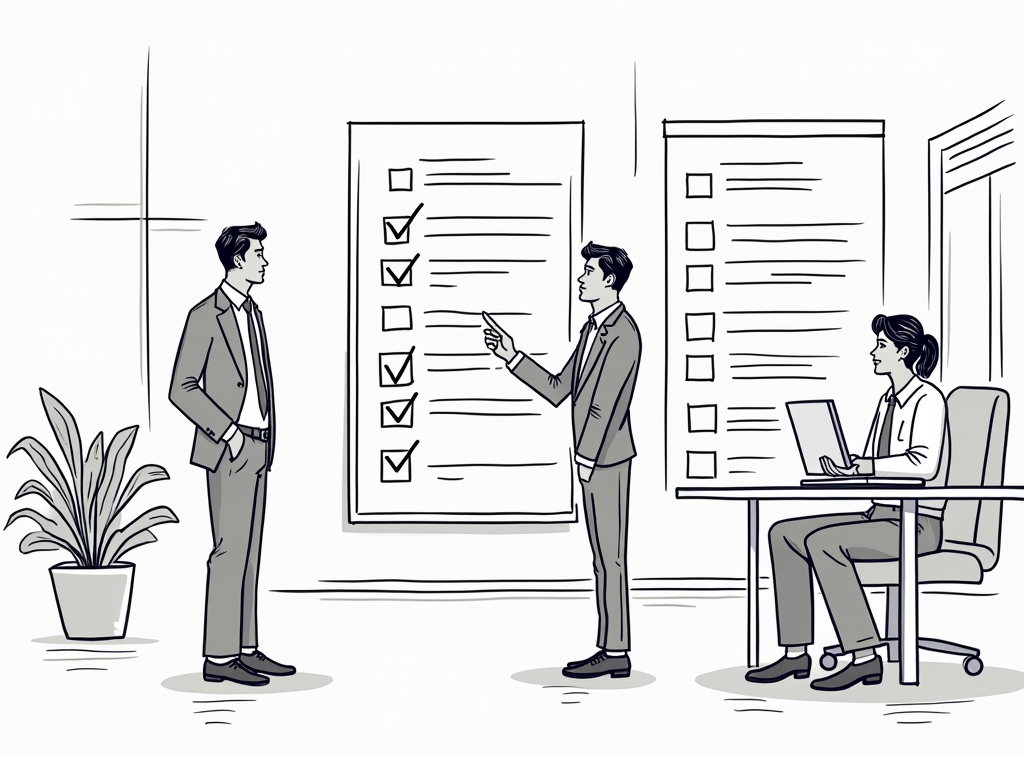
Quarterly vs Annual Tax Filing for Sole Proprietors in Estonia: Strategic Choices for Business Success
Reading time: 12 minutes
Table of Contents
- Introduction: The Estonian Tax Framework
- Understanding Your Filing Options
- Quarterly Filing: Advantages and Considerations
- Annual Filing: Benefits and Potential Drawbacks
- Head-to-Head Comparison: Quarterly vs Annual Filing
- Cash Flow Impact Assessment
- Practical Strategies for Optimizing Your Tax Approach
- Digital Solutions for Estonian Sole Proprietors
- Conclusion: Making Your Decision
- Frequently Asked Questions
Introduction: The Estonian Tax Framework
Navigating Estonia’s tax landscape as a sole proprietor (FIE – füüsilisest isikust ettevõtja) isn’t just about compliance—it’s about making strategic choices that align with your business rhythm and financial goals. The decision between quarterly and annual filing might seem like a mere administrative detail, but in reality, it can significantly impact your cash flow, administrative workload, and even business growth trajectory.
Estonia’s tax system is renowned for its simplicity and digital-first approach, yet sole proprietors still face important decisions about how and when to fulfill their tax obligations. While the e-Tax system has streamlined much of the process, the timing of your tax payments remains a key strategic consideration.
Let’s be clear: there’s no universal “right answer” here. Your optimal filing strategy depends on your business model, income patterns, and financial management style. This guide will help you navigate these waters with confidence, turning a potentially confusing decision into a strategic advantage.
Understanding Your Filing Options
Before diving into comparisons, let’s establish what we’re actually talking about when we discuss quarterly versus annual tax filing for Estonian sole proprietors.
The Estonian Tax Calendar for Sole Proprietors
Estonia’s tax framework offers sole proprietors some flexibility in how they manage their tax obligations. At its core, the system requires:
- An annual income tax return (Form E) due by April 30th following the tax year
- Social tax payments, which can be handled quarterly or annually
- VAT returns (if registered for VAT) submitted monthly or quarterly
The fundamental choice between quarterly and annual approaches primarily affects your advance payments and cash flow management rather than changing your ultimate tax liability.
Legal Requirements vs. Strategic Choices
It’s crucial to understand which elements of tax filing are legally mandated and which allow for strategic decision-making:
Required by law:
- Filing the annual income declaration by April 30th
- Making the minimum social tax contribution based on your declared business income
- Meeting VAT obligations if your turnover exceeds €40,000
Strategic choices:
- Whether to make advance income tax payments
- The timing of social tax payments (quarterly vs. annually)
- How to structure business expenses throughout the tax year
According to Jüri Mägi, a tax advisor at Deloitte Estonia: “Many sole proprietors don’t realize they have options regarding the timing of their tax payments. Understanding these choices can provide significant cash flow advantages, especially for businesses with seasonal income patterns.”
Quarterly Filing: Advantages and Considerations
Quarterly filing involves making advance payments throughout the year rather than settling your entire tax bill after filing your annual return. Let’s examine what this approach offers sole proprietors in Estonia.
The Quarterly Payment Structure
Under the quarterly system, sole proprietors make advance payments on the 15th of the third month of each quarter:
- March 15th (Q1)
- June 15th (Q2)
- September 15th (Q3)
- December 15th (Q4)
These payments are calculated based on either your previous year’s taxable income or your estimated current year income. The Estonian Tax and Customs Board (EMTA) typically bases the required payment amount on your previous year’s results, but you can adjust this if your circumstances have changed significantly.
Benefits of Quarterly Filing
The quarterly approach offers several distinct advantages:
- Predictable cash flow management: Smaller, regular payments can be easier to budget for than one large annual payment
- Reduced year-end tax shock: You avoid the potential stress of a large lump sum payment
- Potential penalty avoidance: Regular payments throughout the year help ensure you meet your tax obligations on time
- Business discipline: Quarterly filing often encourages more consistent record-keeping and financial awareness
Case Study: Margus, a web developer from Tartu, switched to quarterly filing after his first year as a sole proprietor. “That first annual tax bill was a shock,” he explains. “I hadn’t set aside enough, and it created serious cash flow problems. Now with quarterly payments, I’ve built tax obligations into my regular business rhythm, and I’m never caught off guard.”
Potential Drawbacks
However, quarterly filing isn’t without its challenges:
- Four payment deadlines to track instead of one
- Potentially paying tax before earning the corresponding income
- Additional administrative overhead throughout the year
- Less flexibility in using tax funds for business operations during the year
Annual Filing: Benefits and Potential Drawbacks
The annual filing approach allows sole proprietors to calculate and pay their taxes once per year, after filing their annual tax return by April 30th following the tax year.
The Annual Payment Structure
With annual filing, the primary tax calculation and payment occur after your annual tax return is processed. This typically means:
- Filing your income tax return by April 30th
- Paying your assessed tax liability by October 1st
- Managing your finances independently throughout the year
This approach puts the responsibility on you to set aside sufficient funds throughout the year to cover your eventual tax bill.
Benefits of Annual Filing
Annual filing offers several compelling advantages:
- Greater cash flow flexibility: You retain control of your funds throughout the year
- Simplified administrative process: Only one major tax deadline to manage
- Opportunity for strategic year-end planning: More room to make business decisions that affect your tax position
- Adaptation to irregular income: Better suited for businesses with highly variable or seasonal revenue
Case Study: Liisa, a seasonal tour operator in Pärnu, relies exclusively on annual filing. “My business operates primarily from May to September,” she notes. “With annual filing, I can use my peak season revenues to cover operational costs during the winter, essentially using that money as an interest-free loan before settling my tax bill in the following year.”
Potential Drawbacks
The annual approach comes with significant challenges to consider:
- Requires strong financial discipline to set aside funds throughout the year
- Can create cash flow pressure when the annual tax bill comes due
- May lead to underestimating tax obligations
- Potential interest charges if you miscalculate and cannot pay on time
Head-to-Head Comparison: Quarterly vs Annual Filing
Let’s compare these approaches across several critical dimensions that matter to sole proprietors in Estonia:
| Factor | Quarterly Filing | Annual Filing | Best For |
|---|---|---|---|
| Cash Flow Impact | Steady, predictable outflows | Single large outflow | Quarterly: Stable income businesses Annual: Seasonal businesses |
| Administrative Burden | Higher (four deadlines) | Lower (one main deadline) | Quarterly: Those with accountants Annual: Self-managed businesses |
| Financial Discipline Required | Moderate | High | Quarterly: New entrepreneurs Annual: Experienced business owners |
| Risk of Penalties | Lower (smaller amounts, multiple chances) | Higher (one large payment) | Quarterly: Risk-averse entrepreneurs Annual: Those with financial buffers |
| Business Growth Flexibility | Less flexible – funds committed to tax | More flexible – funds available longer | Quarterly: Established businesses Annual: Growing enterprises |
According to Estonian Tax Board statistics, approximately 58% of sole proprietors opt for quarterly filing, while 42% choose the annual approach. This split reflects the balanced nature of the decision – there’s no overwhelmingly superior choice for all businesses.
Cash Flow Impact Assessment
The timing of your tax payments can significantly impact your business’s cash position throughout the year. Let’s explore this critical dimension in more detail.
Visualizing the Cash Flow Difference
Consider a sole proprietor with €48,000 in annual taxable income after deductions, facing an effective tax rate of approximately 25% (including income tax and social contributions).
With quarterly filing, this entrepreneur would make four payments of approximately €3,000 each (€12,000 total), distributed throughout the year.
With annual filing, they would retain that €12,000 until the payment deadline, potentially using it for:
- Business investments
- Emergency reserves
- Temporary cash flow management
- Personal financial needs
The annual approach essentially provides an interest-free loan from the government until the tax payment is due. However, this benefit comes with the significant responsibility of ensuring those funds are available when needed.
Aligning with Business Cycles
Your optimal filing approach should align with your business’s natural rhythm:
- Consistent monthly revenue: Quarterly filing often works well, creating a predictable pattern of tax payments that matches your steady income
- Seasonal or project-based income: Annual filing provides flexibility to manage cash during lean periods
- Growing businesses: Annual filing may allow reinvestment of funds throughout the year to fuel expansion
- Businesses with high upfront costs: Annual filing can help manage periods when expenses precede revenue
Katrin Eha, financial advisor at LHV Bank, suggests: “Consider your business’s cash conversion cycle when choosing between quarterly and annual filing. If you typically wait 60-90 days for client payments, the flexibility of annual filing might better accommodate your cash flow reality.”
Practical Strategies for Optimizing Your Tax Approach
Regardless of which filing method you choose, implementing strategic practices can help you maximize the benefits and minimize the drawbacks.
For Quarterly Filers: Maximizing Predictability
If you’ve opted for quarterly filing, consider these approaches:
- Create a dedicated tax account: Set up a separate bank account specifically for tax obligations to prevent mixing these funds with operational money
- Implement ‘tax-first’ budgeting: Calculate the tax component of each invoice when received and immediately transfer that portion to your tax account
- Review quarterly payment amounts: If your business circumstances change significantly, contact the Tax Board to adjust your advance payment amounts accordingly
- Align major purchases with tax deadlines: When possible, schedule large business expenditures after quarterly tax payments to avoid cash flow constraints
Pro Tip: The Estonian Tax Board allows you to make voluntary advance payments at any time. If you have an unexpectedly profitable month, consider making an additional voluntary payment to reduce year-end surprises.
For Annual Filers: Building Financial Discipline
If annual filing suits your business better, these strategies can help you manage the associated risks:
- Implement the “30% rule”: Automatically set aside 30% of all business income in a separate account for taxes (adjust based on your actual tax rate)
- Create quarterly self-imposed deadlines: Even though you’re not required to file quarterly, conduct quarterly tax estimates to stay informed about your accumulating liability
- Consider interest-bearing accounts: Place your tax reserves in an interest-bearing account to earn some return on funds awaiting payment
- Maintain a tax calendar: Set reminders throughout the year for tax estimation checkpoints, not just the final deadline
Real-world example: Toomas, a freelance graphic designer in Tallinn, uses the annual filing approach but has automated his tax management: “I’ve set up my business banking to automatically transfer 28% of every incoming payment to a separate ‘tax account.’ This happens instantly, so I’m never tempted to spend that money. By the time my annual tax bill arrives, I’ve usually over-saved, which creates a nice buffer.”
Digital Solutions for Estonian Sole Proprietors
Estonia’s digital infrastructure offers sole proprietors powerful tools to manage their tax obligations, regardless of which filing approach they choose.
Leveraging e-Estonia for Tax Management
Estonia’s digital ecosystem provides several tools that can simplify tax management:
- e-Tax Board (e-MTA): The central portal for all tax-related activities, allowing you to file returns, make payments, and review your tax history
- Business Account (Ettevõtja pangakonto): A specialized bank account option that automatically calculates and reserves tax on income
- Accounting software integration: Many Estonian accounting platforms directly integrate with the Tax Board’s systems
- Digital receipts recognition: Solutions that automatically categorize and record business expenses from digital receipts
According to the Estonian Association of SMEs, sole proprietors who utilize these digital tools spend on average 5.2 hours less per month on administrative tasks compared to those using traditional methods.
Bridging Quarterly and Annual Approaches
Some innovative sole proprietors in Estonia are creating hybrid approaches using digital tools:
The “Virtual Quarterly” method: While officially using annual filing, these entrepreneurs:
- Set up automated transfers of estimated tax amounts to a dedicated account quarterly
- Use accounting software to generate quarterly “mock filings” to ensure their calculations remain accurate
- Make voluntary advance payments if their business is performing above expectations
- Retain the legal flexibility of annual filing while gaining the predictability of quarterly management
This approach effectively combines the best of both worlds – the disciplined structure of quarterly filing with the flexibility of the annual approach.
Conclusion: Making Your Decision
The choice between quarterly and annual tax filing as an Estonian sole proprietor isn’t merely administrative – it’s a strategic decision that should align with your business model, cash flow patterns, and personal financial management style.
Here’s a practical framework for making your decision:
- Assess your income pattern: Steady income often pairs well with quarterly filing; variable or seasonal income may benefit from annual filing
- Evaluate your financial discipline: Be honest about your ability to set aside funds for future tax obligations
- Consider your growth trajectory: Rapidly growing businesses might benefit from the cash flow flexibility of annual filing
- Reflect on your stress preferences: Some entrepreneurs sleep better knowing tax payments are handled regularly; others prefer maintaining control of their funds
Remember, there’s no universally “correct” choice. The best approach is the one that supports your business goals while ensuring you meet your tax obligations without undue stress or financial strain.
Well, here’s the straight talk: Successful tax management for Estonian sole proprietors isn’t about finding some secret loophole—it’s about making an informed choice between quarterly and annual filing, then implementing disciplined practices to make that choice work for your specific business reality.
And perhaps most importantly: your choice isn’t permanent. Many successful entrepreneurs start with quarterly filing for the structure it provides, then transition to annual filing as they develop stronger financial management skills. Others move from annual to quarterly filing as their business stabilizes and predictability becomes more valuable than flexibility.
The true power lies not in which option you choose, but in making that choice deliberately, with full awareness of how it will impact your business throughout the year.
Frequently Asked Questions
Can I switch between quarterly and annual filing methods if my business situation changes?
Yes, you can switch between filing methods. To change from quarterly to annual, you need to submit a formal request to the Estonian Tax and Customs Board (EMTA) explaining your situation. When switching from annual to quarterly, you can simply begin making quarterly advance payments. However, it’s usually best to make this transition at the start of a new tax year to avoid complications. Contact the Tax Board directly for guidance specific to your situation before making the switch.
How do I calculate my quarterly tax payments if my income varies significantly throughout the year?
If your income fluctuates substantially, you have two options. First, you can base payments on the previous year’s income (the Tax Board’s default approach). Alternatively, if you expect significant changes, you can request adjusted quarterly payment amounts by submitting revised income estimates to the Tax Board. The key is proactive communication—if you anticipate a major change in income (either increase or decrease), notify the Tax Board as early as possible. This prevents both underpayment (which can lead to penalties) and overpayment (which unnecessarily restricts your cash flow).
Are there any tax benefits or disadvantages to either quarterly or annual filing in terms of the total amount I’ll pay?
The total tax liability remains the same regardless of which filing method you choose—the difference lies in timing, not amount. However, there can be indirect financial impacts. With annual filing, you retain control of funds longer, potentially allowing you to invest this money in your business or earn interest. Conversely, quarterly filing might help you avoid late payment penalties if you struggle with financial discipline. The true benefit comes from choosing the approach that best matches your business’s cash flow patterns and your personal financial management style, not from tax calculations themselves.








